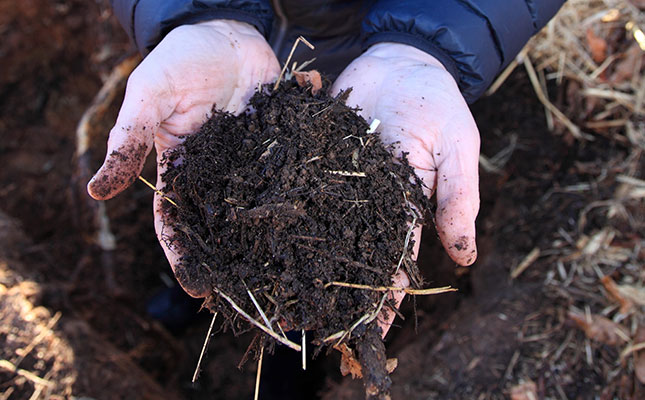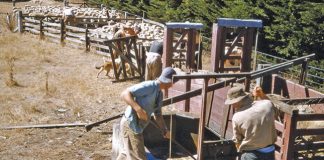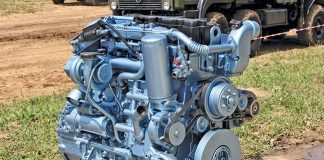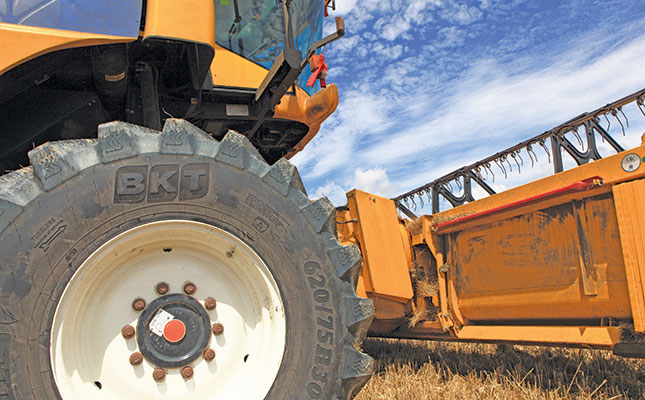
Photo: FW Archive
“If you don’t know when to irrigate and how much water to apply, as well as when not to irrigate, you risk over-irrigating, wasting water and fertiliser, and placing the plant under pressure. There’s also a risk that you may under-irrigate and limit the plant’s production potential,” says irrigation expert and agronomist, Robbie Childs.
“The goal is to develop a user-friendly scheduling plan that ensures sustainable production and uniform results.”
This requires digging profile pits, fitting soil water monitoring equipment, establishing a scheduling programme, using weather stations and, most importantly, gaining knowledge.
READ New irrigation systems: making do with less
“Don’t take shortcuts and omit any steps,” cautions Childs. “If you don’t fit every piece of the puzzle in perfectly, optimal irrigation won’t be possible, and production will suffer.”
Profile pits
When you dig a profile pit, pay attention to soil type and texture, signs of excessively wet soil, the depth and width of the active root zone, and the soil layers, which may impede root development and water distribution.
“You need to ask a number of key questions,” says Childs.
“How much clay, sand and silt is contained in the soil? Do you need to install a drainage system? What is the size of the root zone? And can you mechanically improve the impeding soil layers?”
After irrigation has started, the profile pit will become a tool to recalibrate soil water monitoring equipment and manually monitor soil water levels.
It is important to distinguish between the active root zone and the deeper, less active roots, or buffer zone.
“This is to prevent over-irrigation of the buffer zone, as water uptake is slower there,” explains Childs. “If you make this distinction, you can schedule shorter maintenance irrigation periods, and longer corrective irrigation periods only when the buffer zone requires it.”
One of the tests done during the preparation and planning phase is the basic soil water distribution test. This determines the width-to-depth wetting ratio of the soil.
“From other data, you can determine how deep to irrigate, and with this test, you can also determine how wide the water will spread. With this knowledge, you’ll know what the soil’s water-holding capacity is, and the size of the soil reservoir in millimetres or litres.”
Soil water monitoring
A number of devices are available for measuring soil water levels. These are distinguished mainly by the way they take measurements; for example, taking single measurements instead of multiple, continuous measurements.
“Although both types of devices get the job done, I favour continuous measurement, as the data it produces fills the gaps in the available data,” says Childs.
Measuring is essential for efficient irrigation. But several factors complicate the matter.
These include rainfall, how much rainwater actually reaches the root zone, plant stress factors that may impede water uptake, and what depth the irrigation water reaches.
Measurement makes it possible to continuously adjust your scheduling regime and attend to its finest details.
READ Soil health: farming with nature, guided by science
A variety of factors causes plant stress, and all of these must be considered. They include the salt content of the water, root problems caused by Phytophthora and nematodes, saturated or dry soil, soil compaction, and imbalances in soil elements.
Do the maths or get a scheduling programme
Tailor-made scheduling irrigation is based on data from a variety of sources. But this data means little if it is not processed.
“You can do irrigation scheduling without a scheduling programme, as long as you do the necessary arithmetic,” says Childs. “Without these calculations, irrigation scheduling will just be a guessing game.”
Among the other factors, you need to calculate how much water the soil reservoir can hold, how much water is applied over the total area per hour, and the actual water requirements of the plant per day.
“It’s easier to do all of this with a good scheduling programme,” adds Childs.
Various programmes are available, and your choice of programme will depend on the specific requirements of a system as well as personal preference. It is essential, however, that the programme allows you to adjust for crop type, type of irrigation system, soil data and weather data.
The programme will propose an irrigation guideline, which will still have to be fine-tuned by considering the accuracy of evapotranspiration (ETo) data, the crop coefficient (Kc), the water-holding capacity of the soil, the potential of the crop planted and the age of the plants.
Key factors determining an irrigation schedule
Many factors will influence scheduling calculations, including:
- Plant and row spacing;
- Continuously updated ETo value;
- Soil moisture levels;
- Crop type (this will determine the Kc), and age of plants;
- Dripper/sprinkler spacing, and flow/delivery rate of drippers/sprinklers;
- Rainfall (to calculate water penetration to the active root zone).
A scheduling guideline must be adjusted continually in line with changing circumstances and new data.
“Let’s say that you decide, based on the available knowledge, to irrigate three hours a day, six days a week,” says Childs.
“At the end of the first week, you’ll check data from the monitoring equipment, and obtain profile pit data.
“You’ll also get the latest weather data.
“If the data shows that the soil is too wet, for example, you will need to adapt by reducing the active irrigating hours.
“Conversely, you can increase the active irrigating hours if the data indicates that the soil has become too dry.”
Two methods
There are two approaches to irrigation scheduling: fixed hours or quantities in a varying cycle, or a fixed cycle with varying hours. “Your approach will be determined by the irrigation method in use,” explains Childs.
For a localised irrigation system, such as drip irrigation, a fixed cycle with varying hours is the best approach.
“An irrigation method that wets a larger area will require a varying cycle,” notes Childs.
It all comes down to one truth, he emphasises: you cannot depend on guessing and estimates in irrigation scheduling.
“Only if you collect the data and do the necessary calculations will you have success.”
Visit netafim.co.za, or email [email protected].











